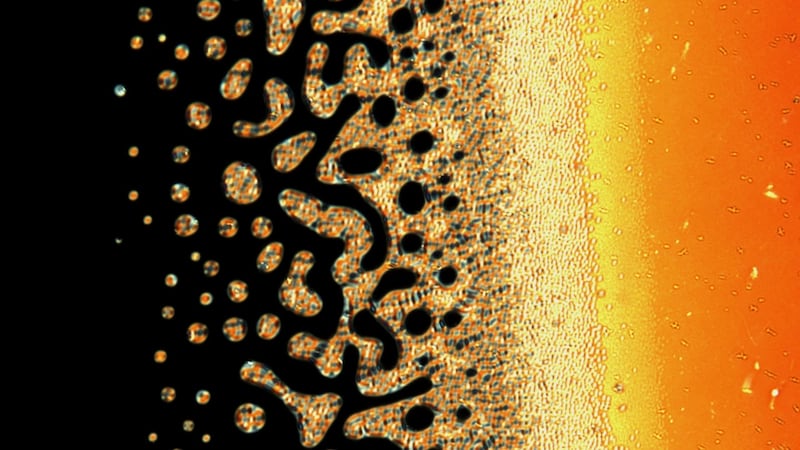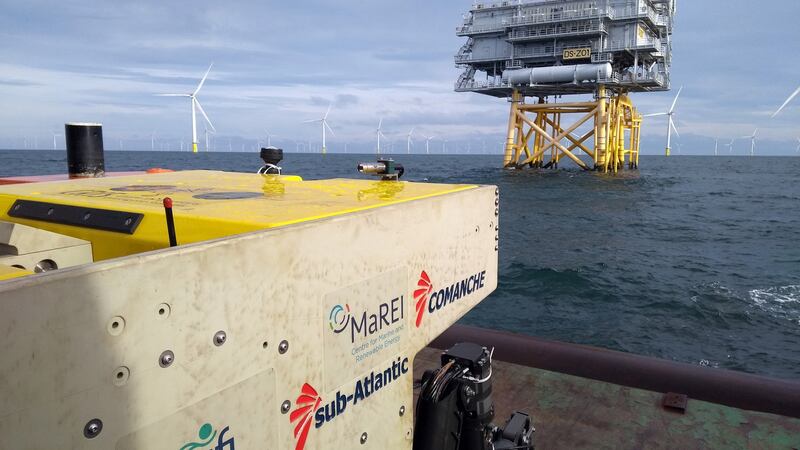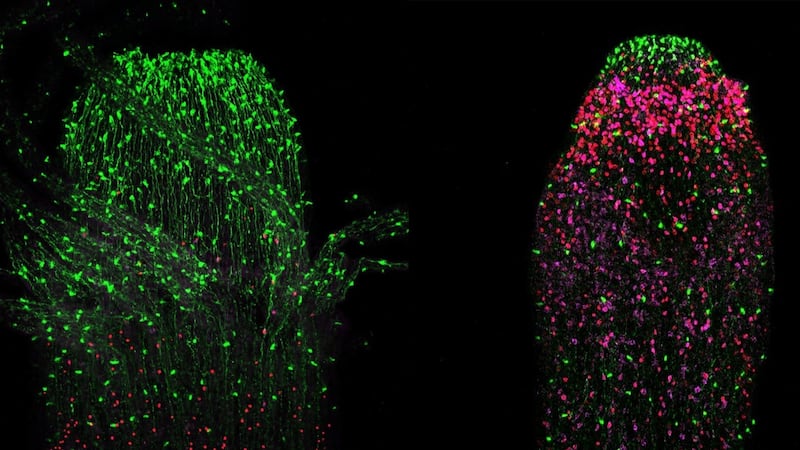A scientist who is one the world's leading researchers on nanoscale materials has received the Science Foundation Ireland (SFI) Researcher of the Year 2018 award.
Prof John Boland of Trinity College Dublin (TCD) and the SFI-funded AMBER research centre works on the electrical and mechanical properties of nanoscale materials, and the exploitation of nanoscale connectivity in devices.
He is a leading researcher on “neuromorphic” computers, which are predicted to be the next frontier in the evolution of artificial intelligence (AI) and machine learning. They will have the ability to carry out ultra-fast sensory processing, image recognition, and motor control, prompting movement tasks which are natural to the human brain.
At the core of these computers are nanowire networks, made of microscopic threads of nickel or silver, that “mimic the brain” in how they send and process information. Nanowires are similar to normal electrical wires but are extremely small – typically a few hundred atoms thick, or less than one thousandth of the thickness of a human hair.
Research
The award recognises the accomplishments of a SFI-funded researcher who has contributed to the Irish research community including exceptional scientific and engineering research outputs combined with a clear demonstration of ability to communicate their research.
On receiving the award, Prof Boland said: "Being recognised as researcher of the year is no small accolade and I am deeply honoured to receive it. Alongside my own work on nanoscale materials, there are many diverse research projects ongoing across Ireland, and it is wonderful to see representatives from those being recognised."

The SFI Early Career Researcher of the Year Early is Dr Tomás Ryan, assistant professor at TCD School of Biochemistry and Immunology and its Institute of Neuroscience. In 2017, he set up his independent research group at Trinity, where he investigates the basic neuroscience of memory storage.
At a presentation at the SFI Science Summit, Dr Ryan said it was both humbling and encouraging to be acknowledged for the work he and his team is undertaking. “The neuroscience of memory is a complex and developing field in need of young, independent researchers with appropriate support, and it is reassuring to have SFI behind us.”

The SFI Industry Partnership Award which honours collaboration between an SFI-funded academic research group and industry was won by Dr Ivan O'Connell of the Tyndall National Institute attached to UCC.
Analogue Devices
Dr O’Connell is a principal investigator at Microelectronic Circuits Centre Ireland (MCCI), which is hosted in the Tyndall National Institute. His primary research interests are in the area of analogue mixed signal circuits and data converters. He is particularly interested in the application of this research in the “Internet of Things”, biomedical, smart agriculture and harvesting energy. He has led groundbreaking work with Analogue Devices.
SFI Best International Engagement Award was awarded to Prof Peter O'Brien of Tyndall Photonics. He is currently collaborating in 12 Horizon 2020-EU projects. He is an adjunct professor at the College of Optical Science, University of Arizona, Tucson and a visiting researcher at Columbia University.

Prof Eoin Casey head of UCD School of Chemical and Bioprocess Engineering won the SFI Entrepreneurship Award. His research is focused on the materials-biology interface with a particular interest in how this can be applied to novel water treatment processes. He is a co-founder of the UCD spin-out OxyMem and is a principal investigator at the bioeconomy SFI research centre known as BEACON.
There were joint winners of the SFI Outstanding Contribution to STEM Communication: Dr Niamh Shaw of Blackrock Castle Observatory and Cork Institute of Technology, an engineer, scientist and performer who has a life's mission to get to space, and Dr John O'Donoghue, chemistry education coordinator at TCD School of Chemistry, who empowers third-level students to engage with schools and the public .
Ocular disorders
The SFI Best Reported Impact Award was also jointly awarded this year. Prof Jane Farrar of TCD School of Genetics and Microbiology was honoured for three decades of work in inherited ocular disorders. Her team's research interests have been focused on how genetic information is driving individualisation of medicine and enabling emergence of innovative potent therapeutic solutions for unmet clinical needs. The other recipient was Prof Gianpiero Cavalleri of the Royal College of Surgeons in Ireland and the SFI Research Centre FutureNeuro. His research team is working on a diverse set of projects spanning population genetics, disease genetics and natural selection.
The SFI research image competition celebrates images captured by SFI- funded researchers during the course of their research. This year's winner was Dr Sithara Sreenilayam Pavithran of DCU for a dramatic microscopic image of sea shore-like features in liquid crystal.
Minister for Business, Enterprise and Innovation Heather Humphreys paid tribute to the outstanding work of the awardees. The recipients were among Ireland's top researchers, "while the awards recognise the contribution they are making in key areas including industry collaborations, entrepreneurship, communication and public engagement and discoveries [that] will bring economic growth and societal development in Ireland", she added.












